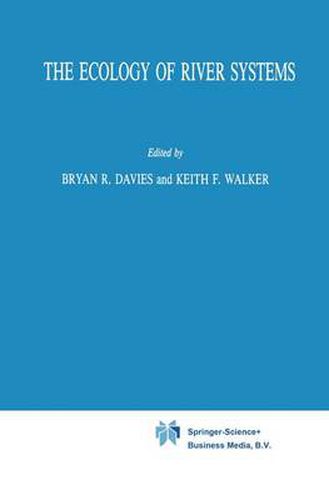Readings Newsletter
Become a Readings Member to make your shopping experience even easier.
Sign in or sign up for free!
You’re not far away from qualifying for FREE standard shipping within Australia
You’ve qualified for FREE standard shipping within Australia
The cart is loading…






This title is printed to order. This book may have been self-published. If so, we cannot guarantee the quality of the content. In the main most books will have gone through the editing process however some may not. We therefore suggest that you be aware of this before ordering this book. If in doubt check either the author or publisher’s details as we are unable to accept any returns unless they are faulty. Please contact us if you have any questions.
Our understanding of the ecology of running waters has come a long way during the past few years. From being a largely descriptive subject, with a few under tones concerned with such things as fisheries, pollution or control of blackflies, it has evolved into a discipline with hypotheses, such as the River Continuum Concept (Vannote et a/. 1980), and even a book suggesting that it offers opportunity for the testing of ecological theory (Barnes & Minshall 1983). However, perusal of the literature reveals that, although some of the very early studies were concerned with large rivers (references in Hynes 1970), the great mass of the work that has been done on running water has been on streams and small rivers, and information on larger rivers is either on such limited topics as fisheries or plankton, scattered among the journals, or not available to the general limnologist. The only exceptions are a few books in this series of publications, such as those on the Nile (Rz6ska 1976), the Volga (Morduckai Boltovskoi 1979) and the Amazon {Sioli 1984), and the recent compendium by Whitton (1984) on European rivers, among which there are a few that rate as large.
$9.00 standard shipping within Australia
FREE standard shipping within Australia for orders over $100.00
Express & International shipping calculated at checkout
This title is printed to order. This book may have been self-published. If so, we cannot guarantee the quality of the content. In the main most books will have gone through the editing process however some may not. We therefore suggest that you be aware of this before ordering this book. If in doubt check either the author or publisher’s details as we are unable to accept any returns unless they are faulty. Please contact us if you have any questions.
Our understanding of the ecology of running waters has come a long way during the past few years. From being a largely descriptive subject, with a few under tones concerned with such things as fisheries, pollution or control of blackflies, it has evolved into a discipline with hypotheses, such as the River Continuum Concept (Vannote et a/. 1980), and even a book suggesting that it offers opportunity for the testing of ecological theory (Barnes & Minshall 1983). However, perusal of the literature reveals that, although some of the very early studies were concerned with large rivers (references in Hynes 1970), the great mass of the work that has been done on running water has been on streams and small rivers, and information on larger rivers is either on such limited topics as fisheries or plankton, scattered among the journals, or not available to the general limnologist. The only exceptions are a few books in this series of publications, such as those on the Nile (Rz6ska 1976), the Volga (Morduckai Boltovskoi 1979) and the Amazon {Sioli 1984), and the recent compendium by Whitton (1984) on European rivers, among which there are a few that rate as large.